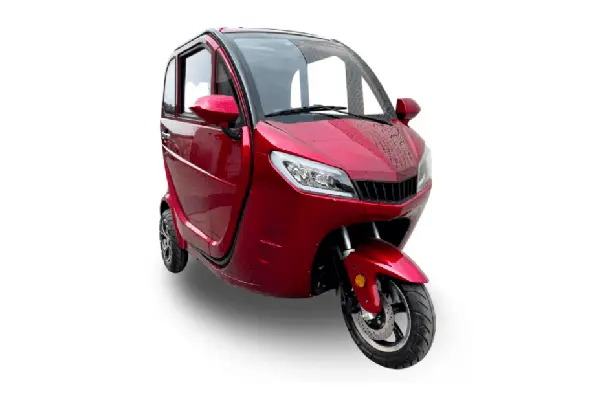Auto tricycles, often referred to as tuk-tuks, motorized rickshaws, or auto-rickshaws, are three-wheeled vehicles popular for public and private transportation in many countries. Known for their affordability, efficiency, and maneuverability in crowded urban areas, they are a common sight on roads in Asia, Africa, and even parts of Europe and South America. A frequent question asked about these versatile vehicles is, how fast do auto tricycles go? The answer depends on various factors, including their engine type, size, design, and purpose.

Factors That Influence the Speed of Auto Tricycles
- Engine Capacity
The speed of an auto tricycle is heavily influenced by its engine capacity, which is usually measured in cubic centimeters (cc). Smaller engines, typically ranging from 100cc to 250cc, are common in traditional models.- 100cc-150cc Engines: These are ideal for short-distance travel and generally reach speeds of 30-40 mph (48-64 km/h).
- 250cc Engines and Higher: Found in more modern or cargo-focused tricycles, these engines can achieve speeds of 50-60 mph (80-96 km/h).
- Purpose of the Tricycle
Auto tricycles come in various designs to cater to different needs, and their speed capabilities differ accordingly:- Passenger Tricycles: Designed for transporting 2-6 passengers, they prioritize stability and comfort over speed, typically maxing out at 30-45 mph (48-72 km/h).
- Cargo Tricycles: These are built to carry heavier loads, often sacrificing speed for torque and durability, with top speeds of around 25-35 mph (40-56 km/h).
- Sports or Performance Models: Rarely, tricycles are modified or designed for speed, allowing them to exceed 60 mph (96 km/h).
- Terrain and Conditions
The type of terrain and road conditions also affect an auto tricycle’s speed.- On smooth, paved roads, tricycles can operate at their maximum speeds.
- On rough or uneven terrain, speed is typically reduced to ensure stability and safety.
- Load Weight
The number of passengers or the weight of the cargo significantly impacts speed. Heavier loads slow down the vehicle, especially when climbing inclines or driving on rough roads. - Electric vs. Gas-Powered Models
Electric auto tricycles are increasingly popular due to their eco-friendliness.- Electric Models: These generally have lower top speeds, around 25-30 mph (40-48 km/h), as they prioritize energy efficiency and range over speed.
- Gasoline-Powered Models: Often faster, with speeds reaching 40-50 mph (64-80 km/h), depending on the engine size.
Average Speed of Auto Tricycles
For the most common models found on the roads today, the average speed of an auto tricycle ranges between 30 to 50 mph (48 to 80 km/h). This range allows them to serve their primary purpose effectively: providing quick, affordable, and flexible transportation in congested urban areas.
Comparison with Other Vehicles
Auto tricycles are not designed to compete with cars, motorcycles, or scooters in terms of speed. Instead, their unique selling points are:
- Affordability: Lower purchase and maintenance costs compared to cars.
- Efficiency: Low fuel consumption and emissions.
- Maneuverability: Ability to navigate narrow streets and crowded areas.
While motorcycles can often exceed speeds of 100 mph (160 km/h) and cars average around 70-100 mph (112-160 km/h) on highways, auto tricycles remain a practical choice for short distances and urban commutes.
Safety Considerations at Higher Speeds
Auto tricycles are generally not built for high-speed travel due to their three-wheeled design, which can make them less stable than four-wheeled vehicles. When driving at higher speeds, tricycles may:
- Become harder to control during sharp turns.
- Be more susceptible to tipping over, especially when carrying heavy loads.
- Experience reduced braking efficiency due to their lighter weight and simpler braking systems.
Drivers and operators should always adhere to local speed limits and operate tricycles responsibly to ensure the safety of passengers and other road users.
Technological Innovations in Auto Tricycles
Modern auto tricycles are increasingly benefiting from advancements in technology:
- Electric Motors: Offering quieter and cleaner alternatives with speeds comparable to traditional gas engines.
- Improved Aerodynamics: Enhancements in design that reduce drag and slightly improve speed and efficiency.
- Smart Features: GPS tracking, digital meters, and better safety systems are now common in newer models.
These innovations are making auto tricycles faster, safer, and more sustainable without compromising their affordability and practicality.
Conclusion
Auto tricycles are not the fastest vehicles on the road, but they are designed to meet specific needs, particularly in urban and semi-urban areas. With average speeds ranging from 30 to 50 mph (48 to 80 km/h), they strike a balance between functionality and efficiency. Factors like engine size, design purpose, and load capacity determine their speed capabilities. As technology continues to evolve, innovations like electric motors and improved designs are making auto tricycles even more efficient and versatile. Whether used for passenger transport or cargo hauling, these three-wheeled vehicles remain a reliable and economical choice worldwide.
Post time: 12-24-2024




